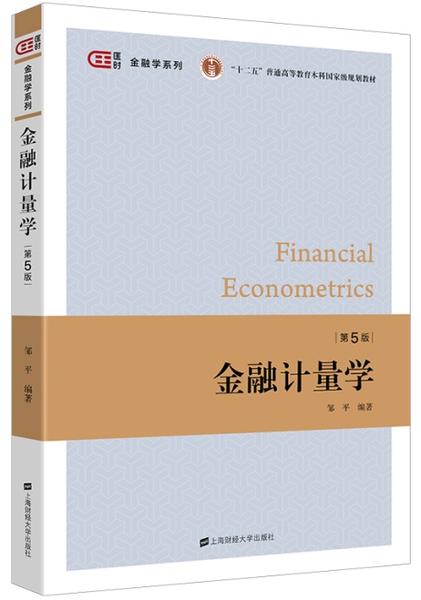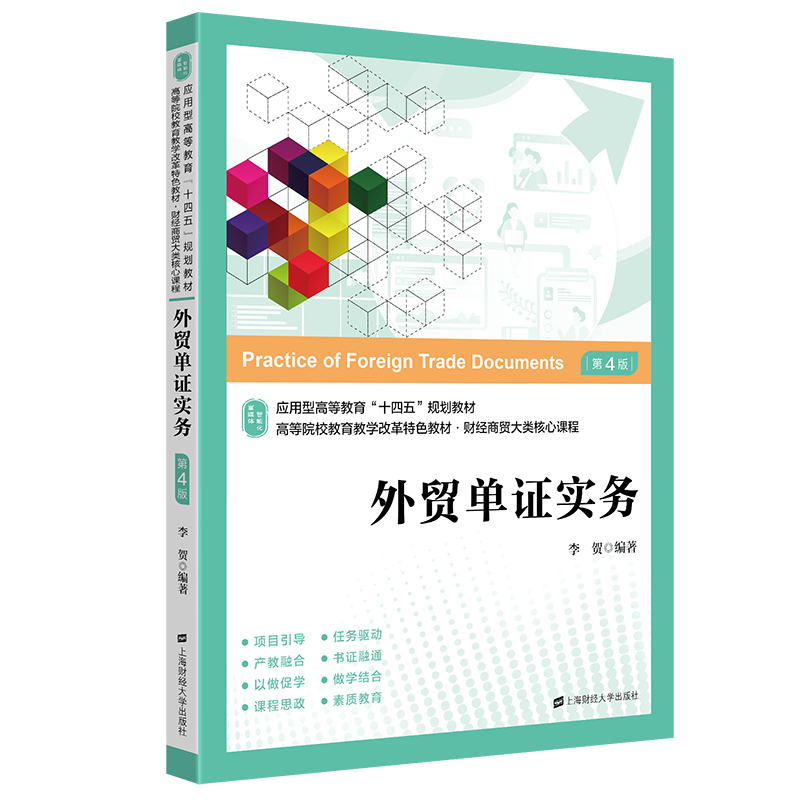Part Ⅰ Financial Management
Chapter 1 Introduction to Financial Management3
1.1 What is Financial Management3
1.2 The Forms of Organizing Firms4
1.3 The Goals of Financial Management6
1.4 Time Value of Money8
Chapter 2 Making Investment Decisions13
2.1 Overview of Project Investment13
2.2 Project Cash Flow14
2.3 Investment Appraisal Methods17
2.4 Dynamic Appraisal Methods20
Chapter 3 Corporatefinancing Decisions27
3.1 Equity Capital Raising27
3.2 Debt Capital Raising30
3.3 Cost of Funds34
3.4 Operating and Financial Leverage37
3.5 Capital Structure41
Chapter 4 Managing Working Capital45
4.1 Cash Management45
4.2 Inventory Management51
4.3 Accounts Receivable Management54
4.4 Trade Credit58
Part Ⅱ Financial Markets
Chapter 5 The Financial Markets63
5.1 Introduction to Financial Markets63
5.2 Development of Financial Markets70
Chapter 6 Determinants of Assets Prices and Interest Rates78
6.1 Interest and Interest Rate78
6.2 The Measure of Interest Rate82
6.3 Theories of Interest Rate Determination84
6.4 Factors that Affect Interest Rates and Effect of Interest Rate88
6.5 Pricing of Financial Assets89
Chaper 7 Central Banks, Investment Banks, Securities Dealers98
7.1 Introduction to Central Banking98
7.2 Functions of Central Bank100
7.3 Business of Central Bank103
7.4 Investment Banks105
7.5 Securities Dealers110
Chapter 8 Issuing Securities to the Public113
8.1 The Procedure of Public Offering113
8.2 Alternatire Issue Methods114
8.3 The Cash Offer114
8.4 The Announcement of New Equity and the Value of the Firm116
8.5 The Cost of Issuing Securities117
8.6 Rights119
8.7 Dilution119
8.8 Shelf Registration120
8.9 The Private Equity Market120
8.10 What CFOs Say about the IPO Process123
8.11 Mini Case: East Coast Yachts Goes Public123
Part Ⅲ Investments
Chapter 9 Portfolio Theory129
9.1 Risk and Return129
9.2 Capital Allocation between Risk and Riskfree Assets132
9.3 Optimal Risky Portfolios136
Chapter 10 Equilibrium in Capital Markets141
10.1 The Capital Asset Pricing Model141
10.2 Arbitrage Pricing Theory146
10.3 Efficient Market Hypothesis148
10.4 Behavioral Finance Theory150
Chapter 11 Fixedincome Instrument154
11.1 The Overview of Fixedincome Instrument154
11.2 General Features of Bonds154
11.3 Bond Yield156
11.4 Bond Value156
11.5 Why Do People Invest in Bond Security158
11.6 The Important Factors that Should be Considered When Bond Portfolio Management159
11.7 Establish Fixed Income Portfolio161
Chapter 12 Security Analysis165
12.1 Economy/Market Analysis165
12.2 Industrial Analysis169
12.3 Financial Statement and Analysis171
12.4 The Technical Analysis of Stock Investment172
Part Ⅳ Derivatives
Chapter 13 Introduction of Derivatives179
13.1Forward Contracts and Forward Market179
13.2Futures Contracts and Futures Market181
13.3Options and Options Market184
13.4Swaps and Swaps Markets186
13.5Types of Traders188
13.6The Function of Derivatives189
Chapter 14 The Pricing of Forward and Futures193
14.1Forward Prices and Futures Prices193
14.2Some Preliminaries194
14.3The Pricing of Forward Contract on Asset with No Income195
14.4The Pricing of Forward Contract on Asset with a Known Cash Income197
14.5The Pricing of Forward Contract on Asset with a Known Yield198
14.6The Pricing of Commodity Futures Contracts200
14.7Futures Prices and Futures Spot Price201
Chapter 15 The Pricing and the Application of Swaps205
15.1 Some Preliminaries205
15.2 The Pricing of Interest Rate Swaps206
15.3 The Pricing of Currency Swaps210
15.4 Some Applications of Swaps212Chapter 16Binomial Trees Model218
16.1 Introduction to Binomial Trees Model218
16.2 Indepth Understanding of Binomial Trees Pricing Model222
16.3 The Practical Application of Binomial Trees Model223
16.4 Calculation of Binomial Trees Model223
Chapter 17 BlackScholes Model226
17.1 The Composition of the Option Price226
17.2 Indepth Understanding of BlackScholes Model230
References Biliography233
第一部分 财务管理
第一章 财务管理介绍3
第一节 财务管理的概念3
第二节 企业结构的形式4
第三节 财务管理的目标6
第四节 货币的时间价值8
第二章 投资决策13
第一节 项目投资综述13
第二节 项目的现金流14
第三节 投资评估方法17
第四节 动态评估方法20
第三章 融资决策27
第一节 权益资本融资27
第二节 负债资本融资30
第三节 资金成本34
第四节 经营杠杆和财务杠杆37
第五节 资本结构41
第四章 营运资本管理45
第一节 现金管理45
第二节 存货管理51
第三节 应收账款管理54
第四节 交易信用58
第二部分 金融市场学
第五章 金融市场63
第一节 金融市场的介绍63
第二节 金融市场的发展70
第六章 利率及金融资产定价78
第一节 利息和利率78
第二节 利率的度量82
第三节 利率决定理论84
第四节 影响利率的因素和利率的作用88
第五节 金融资产定价89
第七章 中央银行、投资银行及证券交易商98
第一节 中央银行简介98
第二节 中央银行的功能100
第三节 中央银行的业务103
第四节 投资银行105
第五节 证券交易商110
第八章 证券发行113
第一节 公开发行程序113
第二节 发行方法选择114
第三节 现金发行114
第四节 新权益的宣布和企业价值116
第五节 证券发行的成本117
第六节 认股权证119
第七节 稀释119
第八节 暂搁发行120
第九节 私募权益市场120
第十节 财务经理谈首次公开发行过程123
第十一节 小案例:东海岸快艇公司上市123
第三部分 投资学
第九章 资产组合理论129
第一节 风险和收益129
第二节 资本在风险资产和无风险资产之间的配置132
第三节 最优风险组合136
第十章 资本市场均衡141
第一节 资本资产定价模型141
第二节 套利定价理论146
第三节 有效市场假说148
第四节 行为金融理论150
第十一章 固定收益证券154
第一节 固定收益证券介绍154
第二节 债券的一般特征154
第三节 债券收益率156
第四节 债券的价值156
第五节 为什么投资债券158
第六节 管理债券资产组合应考虑的重要因素159
第七节 建立固定收益资产组合161
第十二章 证券分析165
第一节 经济/市场分析165
第二节 行业分析169
第三节 财务报表及分析171
第四节 股票投资的技术分析172
第四部分 衍生品
第十三章 衍生品简介179
第一节 远期和约与远期市场179
第二节 期货和约与期货市场181
第三节 期权与期权市场184
第四节 互换与互换市场186
第五节 交易商种类188
第六节 衍生品功能189
第十四章 远期和期货定价193
第一节 远期价格和期货价格193
第二节 相关知识194
第三节 以没有收益资产为标的的远期和约的定价195
第四节 以已知现金收益资产为标的的远期和约的定价197
第五节 以已知收益率资产为标的的远期和约的定价198
第六节 商品期货和约的定价200
第七节 期货价格和期货即期价格201
第十五章 互换定价和应用205
第一节 相关知识205
第二节 利率互换的定价206
第三节 外汇互换的定价210
第四节 互换的应用212
第十六章 二叉树模型218
第一节 二叉树模型的介绍218
第二节 二叉树模型的详解222
第三节 二叉树模型的应用223
第四节 二叉树模型的计算223
第十七章 布莱克—斯克尔斯模型226
第一节 期权价格的构成226
第二节 布莱克—斯科尔斯模型详解230
参考文献233









